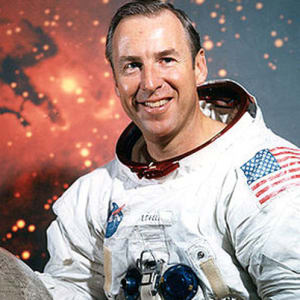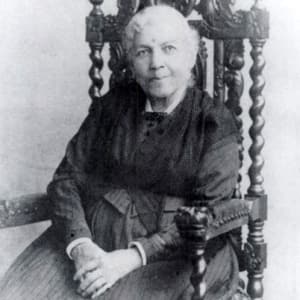
James A. Lovell, Jr.
Jim Lovell is a former NASA astronaut and retired U.S. Naval captain who made several historic space flights from 1965-70, including trips orbiting the moon and commanding the famous Apollo 13 mission.
Synopsis
Born on March 25, 1928, in Cleveland, Ohio, James A. Lovell Jr. was a test pilot before becoming a NASA astronaut. His early interest in rocket science took him to places literally out of this world. For a time, Lovell was the world’s most traveled astronaut and part of several historical firsts with his flights on Gemini 7, Gemini 12 and Apollo 8. On Apollo 13, Lovell and his crew turned an imminent catastrophe into a “successful failure” as they brought home a damaged spaceship. Lovell retired from the space program in 1973 and has worked in the private sector.
Early Life
James Arthur Lovell Jr. was born on March 25, 1928, in Cleveland, Ohio. His father, James Lovell Sr., died when Jim was only five years old. His mother, Blanche, raised her only child in Milwaukee, Wisconsin. There Jim when to Juneau High School and became an Eagle Scout. He attended the University of Wisconsin from 1946-48, before transferring to the U.S. Naval Academy at Annapolis, where he earned a Bachelor of Science degree in 1952. Lovell received further education at Harvard’s Advanced Management Program in 1971.
Career as Navy Test Pilot
After graduating from the Naval Academy, Lovell married Marilyn Lillie Gerlach. They had been high school sweethearts and went on to have four children. Commissioned as an ensign in the U.S. Navy, Lovell served on several assignments, including landing jets on aircraft carriers at night, training that would serve him well throughout his career. In 1958, Lovell graduated from Naval Test Pilot School, beginning a career testing fighter aircraft and other jets. The jobs there carried a high level of danger and a high casualty rate, so it was the place where NASA looked to recruit astronauts.
Entering the NASA Space Program
In September 1962, NASA selected Lovell for astronaut training. It was actually his second application. He had been rejected earlier due to a temporary liver condition. Lovell was selected for the Gemini 7 mission with Frank Borman as commander. The assignment lasted from December 4-18, 1965, and marked the longest any human was in space until the Soviet-manned Soyuz 9 in 1970. It would prove to be an endurance flight as the men had to spend nearly two weeks in a spacecraft the size of a telephone booth. The mission also conducted a crucial maneuver for the planned Apollo missions, the rendezvous of two manned, maneuverable space craft, the Gemini 7 and the Gemini 6A.
His performance on Gemini 7 earned Lovell a command position on Gemini 12 with Edwin “Buzz” Aldrin as pilot from November 11-15, 1966. The mission featured another rendezvous and a docking procedure as well as a spacewalk by Aldrin. The flight brought the Gemini program to a successful close, and NASA then began preparations for the Apollo program and the journey to the moon.
The Apollo 8 mission was scheduled during the Christmas holiday, December 21-27, 1968, and would prove to be a cavalcade of firsts: the first manned mission to leave Earth’s orbit, the first to allow the astronauts to see the Earth as a whole planet, to directly see the far side of the Moon and to witness Earthrise. The mission was also one of the most difficult in NASA’s history. In order for the Lunar Orbiter to travel safely around the Moon, the propulsion unit needed to fire for the exact amount of time at precisely the right moment. Too little or too late and the capsule would be flung off into space; too much or too soon and the spacecraft might crash into the Moon. Updates on the flight were covered by the major American television networks and broadcast all over the world. On Christmas Eve, the crew of Apollo 8 captivated an estimated 1 billion television and radio listeners by reading from the Book of Genesis as an image of the Earth rising over the lunar horizon was shown on television screens. The crew members returned on December 27, 1968 and soon after were voted Time magazine’s "Men of the Year.”
Apollo 13 – “Houston, we have a problem.”
Apollo 13 was to be Lovell’s fourth and final NASA operation and his first time on the surface of the Moon. The mission launched on April 10, 1970, with fellow crew members John L. Swigert Jr. and Fred W. Haise Jr. For the first two days, Apollo 13 was looking like the smoothest flight in history of the program. Fifty-five hours after launch, the flight crew conducted a routine cryogenic oxygen tank stir. Damaged electrical insulation on the wiring created a spark and the tank exploded, causing a loss of oxygen and electrical power in the Command/Service Module. The calm announcement from Apollo 13? “Houston, we have a problem.” The landing on the moon was quickly abandoned and it was decided that the Lunar Module (LM) would become a lifeboat to get the astronauts back to Earth. Lovell piloted the LM around the moon and back home. Apollo 13 returned safely on April 17, 1970.
Retirement
On March 1, 1973, Lovell retired from the Navy as a captain, and left NASA at same time. He worked in various corporate jobs until his retirement in 1991. He now tours the nation giving speeches at colleges and universities about his experiences as an astronaut and businessman. In 1995, Lovell and Jeffrey Kluger wrote Lost Moon: The Perilous Voyage of Apollo 13. The book served as the basis for the 1995 Oscar-winning movie Apollo 13; Ron Howard directed and Tom Hanks, Kevin Bacon and Bill Paxton starred. Lovell had a cameo role in the film as the captain of the recovery ship.




